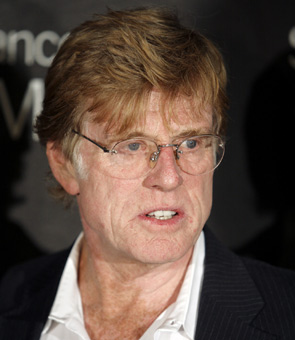
Back before Angelina and orphans, before Bono and Africa, before Diana and landmines, even before Geldof and world poverty, there was Robert Redford and the environment. Redford has been fighting on behalf of the wilderness since the early '70s, when he was a young stud still Barefooting in the Park. (And remember this is Hollywood, where one year is considered a serious commitment, and three decades an eternity.) The list of battles he's fought, places he's saved, and pieces of legislation he's helped along is taller than an old-growth redwood, but one of his major achievements is very tangible. Without Redford there would be no Grand Staircase-Escalante National Monument in Utah, a 1.7-million-acre (7,571 sq km) expanse of land that the star, among others, fought to keep out of commercial hands from 1975 until 1996, when President Clinton effectively closed it to development. Many of his fellow Utahans, especially cattlemen and states-rights activists, did not thank him for his efforts. He's still campaigning for the Arctic National Wildlife Refuge in Alaska, and against global warming — which he was talking about as early as 1989.
As Redford became more successful, he used more and more of his gifts to fight for his causes. He donated money, he shared the limelight, he made documentaries, he gave land and cash and — the famous person's most precious resource — time. His Sundance Channel now airs an environmentally themed block of programming known as the Green. But it's perhaps not what Redford brought into being that was his greatest gift to the environment; it's the example he set. "I learned early," he said, "that you'd better know what you're talking about. You'd better realize that certain issues are going to be so hot — no matter what reason, what logic you apply to it — you're going to be met with an opposition." Every celebrity walks the green path these days, but Redford helped clear it.